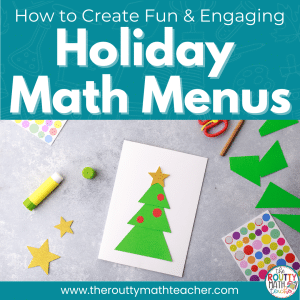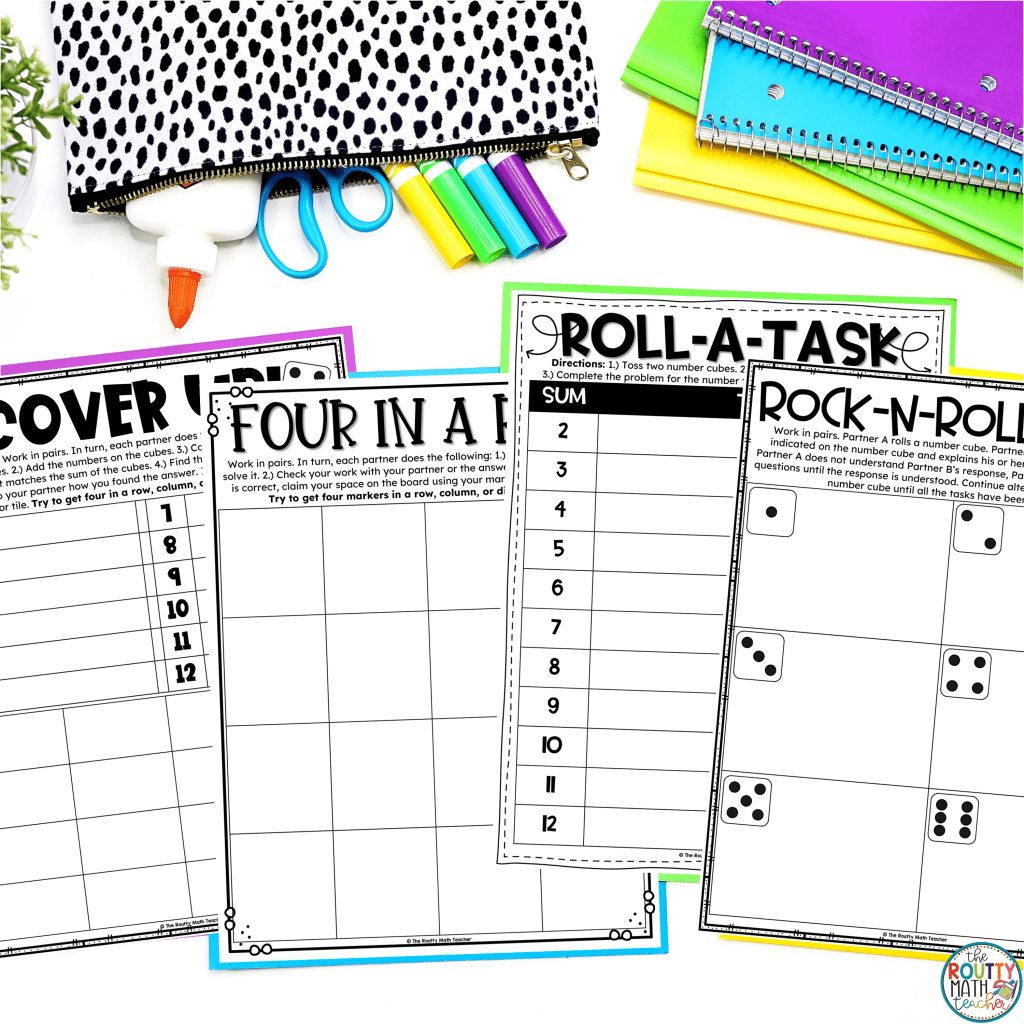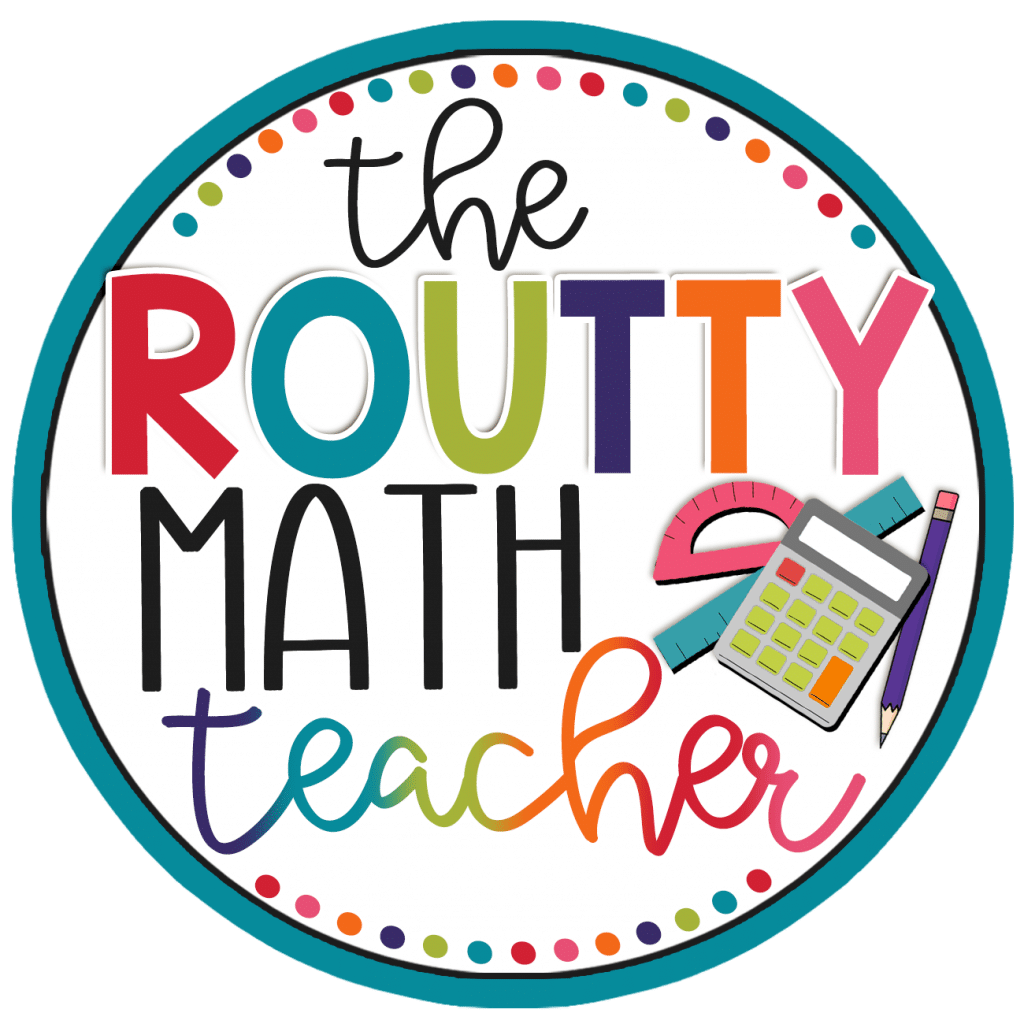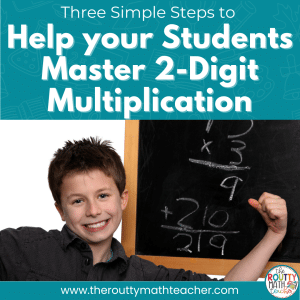
Math Engagement Strategies: Editable Math Games

As math teachers, we wholeheartedly understand the significance of student engagement and differentiation in our instructional practices– to create a dynamic and personalized learning experience for our students. In this post, I share math engagement strategies and highlight ways to differentiate math games for all learners. The post also emphasizes assessment strategies to use during math games and provides resources and tools to help teachers get started.
I’ve always loved teaching math and seeing my students’ faces light up with excitement when they solve a challenging problem.
However, a few years after I started teaching, I noticed a decline in student engagement during my math lessons.
My once lively classroom seemed quiet and disengaged, and I couldn’t help but feel discouraged.
I wondered if it was the result of the monotonous workbook exercises I was required to do or if my teaching methods needed a fresh approach.
I pondered the possible reasons behind this change, knowing engaged students were more likely to grasp and retain mathematical concepts.
As I looked out at my students, I saw them sitting at their desks, their eyes glazed over as they mechanically flipped through their math workbooks.
I knew I needed to make a change, but I had no idea where to start.
How to Supercharge Your Math Instruction
As math teachers, we know the importance of student engagement and differentiation in our instruction. And, in our never-ending quest to create dynamic and personalized learning experiences for our students, we are constantly on the lookout for effective tools that can help us achieve these goals.
One tool that became a secret weapon for me in the classroom after stumbling on the idea while preparing for my annual observation was editable math board games.
Over time, I discovered these games had the potential to capture students’ interest and encourage active participation throughout the learning process.
With this goal in mind, in the following paragraphs, we will explore math engagement strategies and ways to differentiate learning with editable math board games.

The Power of Student Engagement
Student engagement is a crucial ingredient for effective math instruction, as it fosters motivation, deeper understanding, and long-term retention of mathematical concepts.
But, trying to capture and maintain our students’ attention during math lessons can be a challenge for even the most seasoned teachers.
That’s why incorporating editable math board games into your teacher toolbox can be a game-changer. They have the power to ignite enthusiasm, promote active participation, and make math come alive in your classroom!
Math Engagement Strategies
Here are some math engagement strategies to consider when using math games:
- Select engaging themes or contexts for the math board games to capture students’ attention and make the learning experience more enjoyable.
- Incorporate elements of collaboration or gamification to enhance engagement. Students can work together in teams or earn points and rewards for achieving specific goals.
- Utilize interactive game components, such as spinners, dice, or game cards, to add excitement and unpredictability to the gameplay.
- Provide opportunities for student choice in game selection or customization to empower students and give them a sense of ownership over their learning.
- Incorporate multimedia or technology components, such as interactive game boards or online platforms, to add a new level of interactivity and make the games even more engaging.
Differentiating Math Games
Differentiation is essential for meeting the diverse needs of students in the math classroom. It allows us to tailor instruction to individual students, providing appropriate challenges, support, and remediation.
However, differentiating for a room full of students can be challenging. This is where editable math board games come in. They can serve as a valuable tool for differentiation in various ways.
Strategies for Differentiating for Struggling Learners

The key to creating a safe and supportive space where struggling learners feel encouraged and empowered to engage in math board games is to offer various entry points and modes of instruction.
Here are some strategies that address the needs of struggling learners to ensure they can fully participate and experience success with math board games:
- Provide simplified or modified questions and tasks by adding or removing game constraints.
- Change open-ended or short answer questions to multiple-choice items.
- Break down complex rules into smaller steps, using clear and concise language.
- Provide visuals to help students grasp the game rules and objectives.
- Introduce the game in a guided math lesson to ensure students understand the expectations.
- Model the game in whole group instruction and provide a few minutes for students to experience the game before adding it as a station activity.
- Use manipulatives or calculators, when appropriate.
- Scaffold the tasks by providing hints and offering extra examples.
Ways to Add Complexity for Advanced Learners

Just as struggling learners need support, advanced learners also benefit from differentiation to meet their unique needs.
Here are some ways to provide support for advanced learners that keeps them engaged and fosters their mathematical thinking so they get the most from playing math board games:
- Add complexity or additional rules.
- Introduce higher-level problem-solving or critical thinking tasks.
- Encourage advanced learners to create their own variations of the game.
- Use open-ended questions and math tasks.
- Make word problems open-ended by allowing students to choose the numbers.
- Reverse the questions by asking students to determine numbers that yield a final result rather than completing a computation.
- Incorporate bonus tasks to extend gameplay.
Looking for more ways to differentiate for advanced learners? Check out this blog post!
Student Collaboration and Reflection During Game Play
Collaborative learning plays a vital role in math education. Editable math board games can facilitate collaboration among students during gameplay. By encouraging discussions, teamwork, and the sharing of strategies, we foster a collaborative and supportive learning environment.
After playing the math board games, it’s crucial to provide time for reflection and discussion. Students can reflect on their strategies, explain their reasoning, and engage in conversations about different approaches. This reflection helps deepen their understanding and encourages metacognitive thinking.
To read more about using collaborative structures during math games, check out this blog post about how to get your students talking during math!

Assessing Student Learning and Progress During Math Games
To gauge student understanding during and after playing the math board games, various assessment methods, such as formative assessments, provide valuable insights into student learning. Additionally, self-reflection activities allow students to assess their own progress and identify areas for improvement.
Assessment Strategies
Assessing student learning and progress is a critical component of effective math instruction. By evaluating what students have grasped and identifying areas where they may need additional support, teachers can make informed instructional decisions and tailor their lessons to meet the diverse needs of their students.
Using assessments to inform instructional decisions helps create a student-centered classroom. During gameplay, formative assessments, such as observations, questioning, and exit tickets, provide valuable insights into student learning and help identify misconceptions in real-time.
Here are some formative assessment strategies that can be used to gauge student understanding during gameplay with editable math board games:
- Exit Tickets: Provide students with a quick written or verbal question related to the math concept covered in the game.
- Record Responses: Have students record their answers and explanations on a recording sheet or on notebook paper. This allows for a quick assessment of student understanding to review later.
- Observations: Actively observe students as they play the math games. Pay attention to students’ problem-solving strategies, mathematical reasoning, and interactions with peers. Take notes on their strengths, misconceptions, and areas requiring further support.
- Think-Pair-Share: Ask students to think individually about a specific question or problem related to the game, then pair up with a partner to discuss their thinking. Finally, have pairs share their thoughts with the whole class, encouraging deeper understanding and collaboration.
Formative assessments should be ongoing and integrated seamlessly into the gameplay experience. These strategies will provide valuable insights into student learning and guide instructional decisions, ensuring every student receives the support they need to succeed.
Self-Reflection
Encouraging student self-reflection is another powerful assessment tool! After playing math board games, students can engage in self-assessment activities where they reflect on their learning experiences, evaluate their own understanding, and set goals for further improvement.
Here are a few self-reflection strategies that can be used with math games:
- Fist to Five: Ask a self-reflection question and have students use their fingers to indicate their responses. For example, after completing a game, ask students how their understanding of the content has changed, 1 = no change, 3 = some change, 5 = I’ve got this!
- Self-Assessment Checklists: Provide students with self-assessment checklists or rubrics that outline the learning goals and criteria for success in the game. Students can evaluate their own performance and identify areas of strength and areas for growth.
- Sticky Note Prompts: Provide targeted prompts to guide students’ reflection and encourage thoughtful analysis of their learning experience. For example, students can reflect on how the game connected to real-life situations, how they applied problem-solving strategies, or how their thinking changed throughout the game.
The self-reflection process not only empowers students to take ownership of their learning but also helps teachers gain valuable insights into individual student needs so they can tailor their instruction accordingly.

How to Get Started Using Math Games in the Classroom
Editable math board games offer an incredible opportunity to boost student engagement and differentiation in math instruction. Through the use of math engagement strategies and differentiation techniques, we can foster a positive math learning environment and support the diverse needs of our students.
If you’re ready to supercharge learning in your classroom, grab your set of editable math games here!
And, be sure to grab your math talk toolkit to facilitate collaborative conversations during math games using the form below.
Sound Off!
What are your favorite math engagement strategies?





